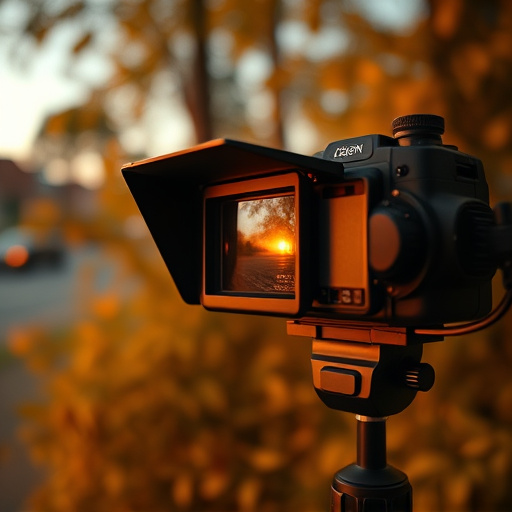Understanding common spy camera placements is crucial for conducting effective counter-surveillance in Airbnb rentals. Inspect door handles, peepholes, light switches, mirrors, and unusual electrical outlets. Look for hidden hardware, unusual wiring, and suspicious markings. Use a smartphone to capture clear images of findings. Employ thermal imaging cameras and RF detectors for advanced detection. Understand legal protections and privacy rights when renting via platforms like Airbnb. Take proactive measures if suspecting illegal monitoring.
Uncover the hidden eyes: This comprehensive guide equips you with professional methods to conduct counter surveillance sweeps, focusing on Airbnb properties. Learn to identify common spy camera placements, master visual inspection techniques tailored for guests, and explore advanced tools designed for detection. Navigate the legal landscape surrounding privacy rights and gain insights into protecting yourself from clandestine recording devices. Discover how to recognize and mitigate potential threats, ensuring your safety and peace of mind while staying in Airbnb accommodations.
- Understanding Common Spy Camera Placement
- Visual Inspection Techniques for Airbnb Guests
- Using Advanced Tools for Detection
- Legal Considerations and Privacy Rights
Understanding Common Spy Camera Placement
Understanding where spy cameras are commonly placed is a crucial step in conducting a counter-surveillance sweep, especially when inspecting short-term rentals like Airbnbs. One of the most frequent spots for hidden cameras is on or near door handles and peepholes. These devices can capture visitors’ facial features as they approach the door, offering potential intruders valuable information about the property’s occupants.
Another common location is inside light switches. Some advanced spy cameras are designed to mimic everyday lighting fixtures, making them nearly invisible. In addition, mirrors and other reflective surfaces might hide cameras trained on entryways or living spaces. When inspecting an Airbnb, pay close attention to these areas, as well as any unusual electrical outlets or devices that could serve as camera hiding spots.
Visual Inspection Techniques for Airbnb Guests
When staying in an Airbnb, privacy is a paramount concern for guests. To ensure your safety and protect personal information, it’s crucial to understand how to spot spy cameras. Visual inspection techniques are an essential part of this process. Start by meticulously examining every corner of the space, paying close attention to areas often overlooked, such as behind mirrors, pictures, and electronic devices. Look for any signs of hidden hardware or unusual wiring that might indicate the presence of surveillance equipment.
Use your smartphone to aid in the inspection, capturing clear images of any suspicious items found. Check for subtle markings on walls or ceilings, which could be indicators of drilled holes or installed cameras. Additionally, be wary of new or unusually placed electronics like smart TVs or digital frames. How to Spot Spy Cameras Airbnb is not just about being vigilant; it’s about empowering yourself with knowledge to enjoy your stay securely and peacefully.
Using Advanced Tools for Detection
In today’s digital era, spotting hidden surveillance devices like spy cameras in Airbnb properties has become a critical skill for professionals and privacy-conscious individuals alike. One of the most effective methods involves employing advanced tools designed to detect electronic bugs and covert recording devices. These tools range from specialized thermal imaging cameras that can reveal heat signatures indicative of camera lenses, to radio frequency (RF) detectors that identify wireless signals emitted by hidden cameras.
For instance, learning how to use an RF detector effectively can be a game-changer when it comes to How to Spot Spy Cameras Airbnb. By scanning for unusual radio frequencies or sudden spikes in signal activity, professionals can pinpoint the location of hidden cameras. Additionally, thermal imaging technology allows for non-invasive visual inspection, helping to uncover devices that might be obscured from plain sight. These advanced tools provide a robust counter-surveillance sweep method, ensuring comprehensive protection during your stay.
Legal Considerations and Privacy Rights
In the realm of counter surveillance, understanding legal considerations and privacy rights is paramount. As you navigate through properties like Airbnb, it’s crucial to be aware of your protections under the law. In many jurisdictions, tenants have a reasonable expectation of privacy, which means landlords or previous occupants cannot secretly monitor spaces without consent. This includes installing hidden cameras for surveillance purposes.
If you suspect the presence of spy cameras in an Airbnb, there are steps you can take. First, inspect the property thoroughly, looking for any unusual devices or modifications. Next, consult local laws and regulations regarding surveillance and privacy. If you find evidence of illegal monitoring, report it to the appropriate authorities. Additionally, inform the host or property manager immediately, as they may be unaware of such activities, and their cooperation could aid in resolving the issue effectively while upholding your privacy rights.
Knowing how to spot spy cameras, such as those covertly placed in Airbnb accommodations, is an essential skill for both guests and hosts. By understanding common placement methods, employing visual inspection techniques, and familiarizing yourself with legal boundaries, you can ensure a safer and more private stay. While the world of counter-surveillance technology advances, staying informed about these professional methods empowers individuals to protect their privacy and peace of mind during travels.
